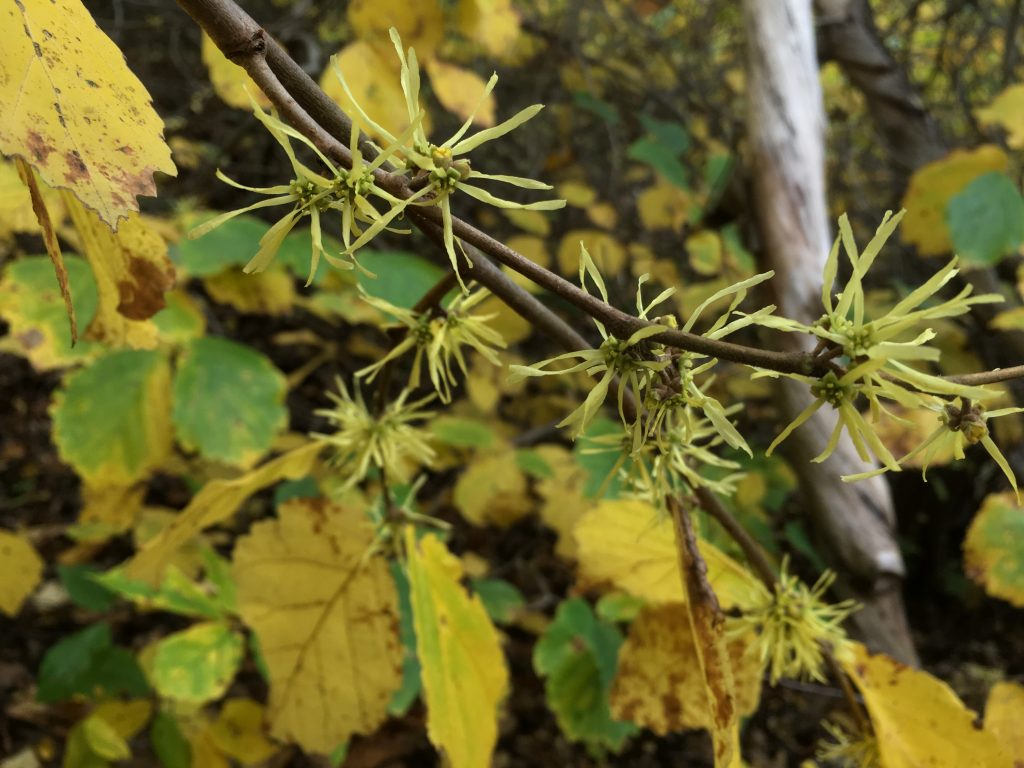
If you’re walking on one of Marblehead’s trails in late October through December, you may be lucky enough to see some small yellow pompoms on branches along the path that look like clusters of miniature yellow crinkly streamers. These are witch hazel flowers.
They’re really easy to miss though. They bloom on plants that only grow to about 10-15 feet high and have multiple stems, so that some plant nurseries don’t even classify them as trees but sell them as bushes. The bark is the same gray color as plenty of other trees and bushes around them. You can look for yellow 3 to 5 inch long oval leaves with pointed ends and wavy edges. If the leaves have fallen your work is already easier because the flowers are more visible. But leaves on yellow-flowered witch hazels tend to stay on the stems even after they have shriveled up. So keep an eye out for the yellow flower pompoms. Look along the edge of paths or in clearings because witch hazel prefers a bit of extra sun.
The ‘witch’ in witch hazel comes from the old English word ‘wice’, meaning ‘pliant’ or ‘bendable’. Witch hazel branches were used in early times to douse for water because of this flexibility. Native American and early settlers used witch hazel bark to help heal gastrointestinal illnesses, colds, tuberculosis, and inflammation. None of these uses have been clinically proven and are not recommended as witch hazel taken internally can be toxic. Settlers also made a water extraction of witch hazel leaves and bark to help sooth and heal diaper rash, scraped skin, poison ivy, sunburn, and insect bites. Witch Hazel Water is still used today and is available through pharmacies.
Most of the witch hazel along Marblehead’s trails is probably the variety named Hamamelis virginialis. It has all-yellow flowers which bloom in late fall. If you take the path along the east side of the Peabody Essex Museum in Salem in February, you’ll see Hamamelis molliswitch hazel flowers, which are yellow flowers with dark red centers. Other witch hazel varieties have orange to dark red flowers and bloom in November through February. If you want to add a bit of late-year color to the back of your garden, you might consider planting a witch hazel. Each year after, you’ll be able to see a little bit of spring during our gray months.
